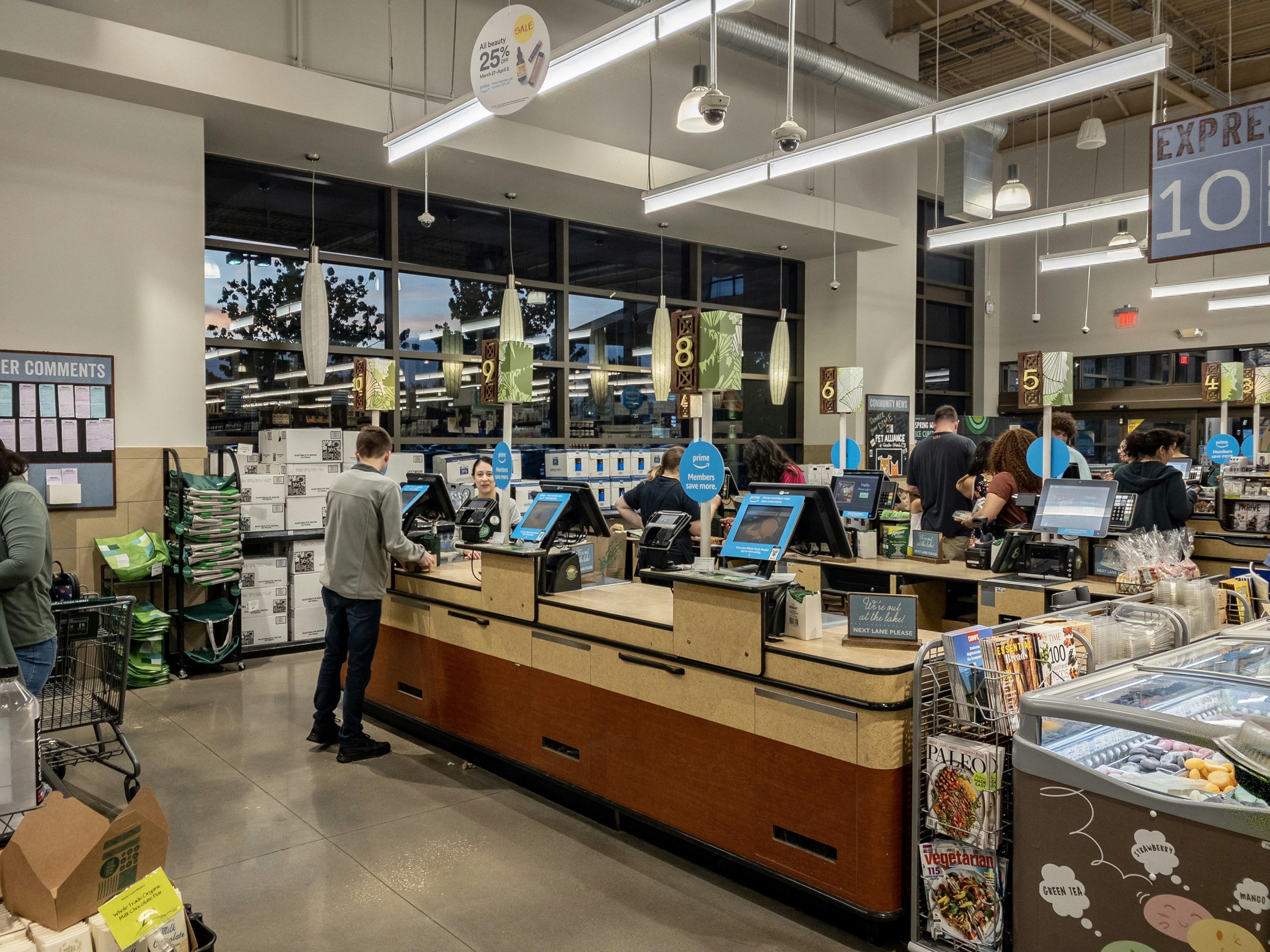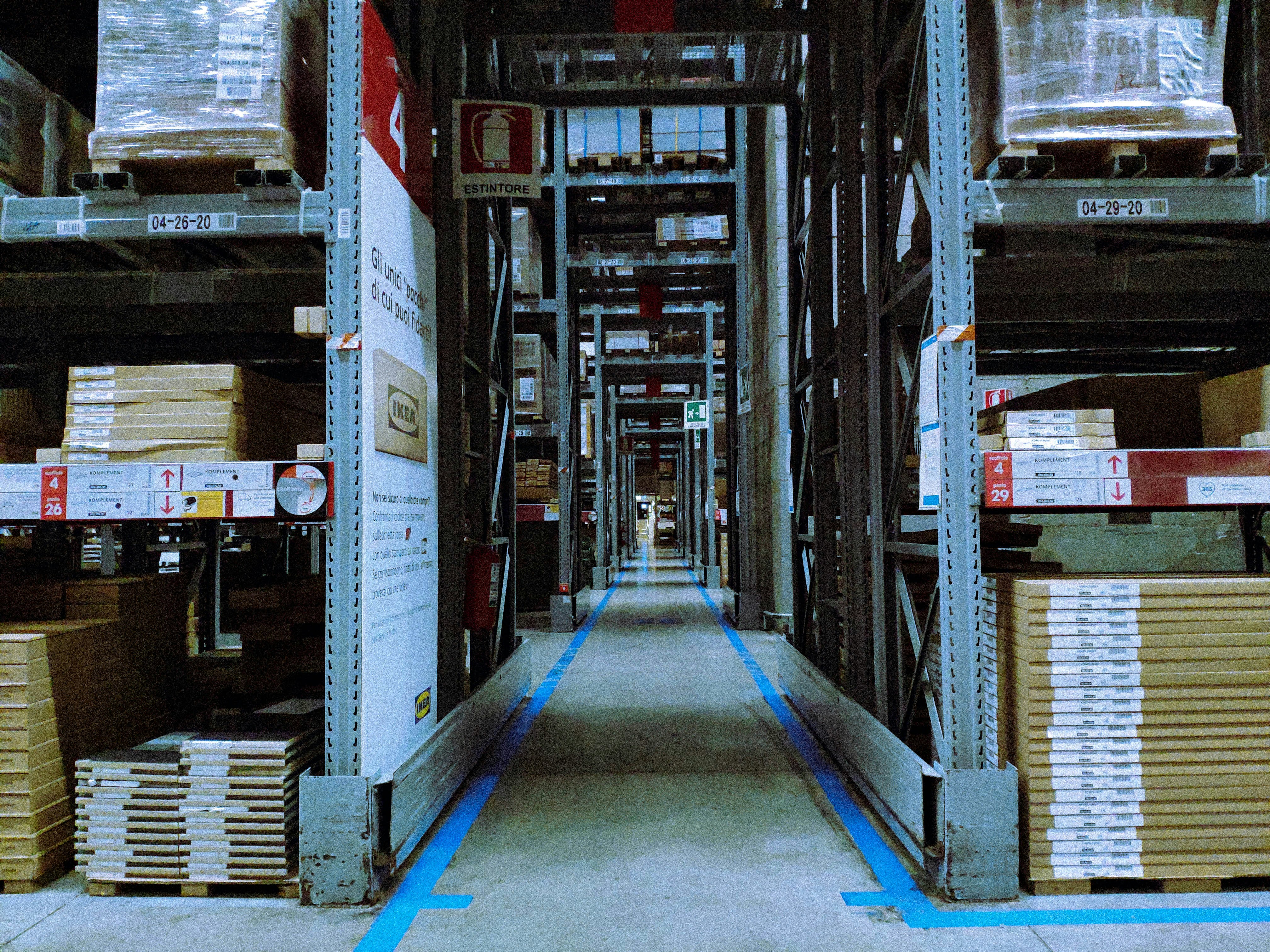Introduction to Barcodes and AI
Barcodes are a method of representing data in a visual and machine-readable form, traditionally consisting of a series of parallel lines and spaces that encode information about a product or item. First developed in the early 1950s, barcodes have since evolved significantly, moving from simple designs to complex variations such as QR codes and 2D barcodes. They are widely utilized across multiple industries, including retail, logistics, healthcare, and manufacturing. Their primary function is to facilitate quick and accurate data capture, which enhances inventory management, streamlines checkout processes, and improves the accuracy of tracking systems.
Artificial intelligence (AI) refers to the simulation of human intelligence processes by machines, particularly computer systems. These processes include learning, reasoning, problem-solving, and understanding natural language. The advent of AI technology has drastically impacted various sectors by optimizing operations, improving decision-making, and enhancing customer interactions. With applications ranging from predictive analytics to automation, AI has become a transformative force in industries striving for efficiency and innovation.
The intersection of AI and barcode technology represents an exciting frontier in both fields. As businesses integrate AI-driven solutions, the way barcodes are scanned, processed, and applied is changing tremendously. AI enhances barcode systems by enabling advanced features such as real-time data analysis, error reduction in scanning, and improved inventory forecasting. This evolution not only increases efficiency but also provides actionable insights that can refine business strategies. As we delve deeper into this topic, we will explore how AI and barcodes are working together to revolutionize various industries, leading to smarter, more efficient practices in everyday operations.
How Barcodes Work
Barcodes are a pivotal technology utilized widely in various industries, serving as an efficient method for encoding data that can be easily scanned and interpreted by machines. The three primary types of barcodes include one-dimensional (1D) barcodes, two-dimensional (2D) barcodes, and Quick Response (QR) codes. Each type varies in structure and application, enabling diverse functionalities ranging from inventory management to marketing.
1D barcodes consist of vertical lines and varying spaces, which represent numerical or alphanumeric data. This type is commonly seen on retail products. When a 1D barcode is scanned, the scanner emits a beam of light that reflects off the barcode and converts it into an electrical signal that can be processed by software. 2D barcodes, on the other hand, allow for the encoding of larger amounts of data due to their matrix structure. They can be scanned more easily from different angles, making them ideal for mobile device applications.
QR codes are a specific type of 2D barcode that has gained significant popularity. They can store URLs, text, and various types of data, making them versatile for numerous applications such as advertising and event ticketing. Scanning a QR code can easily direct a smartphone user to a website or provide vital information without the need for manual input. The QR code’s design also enhances scanning capabilities, ensuring that even if part of the code is damaged or obscured, it can still be read accurately.
A barcode scanning system typically comprises three fundamental components: the scanner, the software, and the database. The scanner detects the barcode through its light-emitting capabilities, while the software translates the scanned data into usable information. Finally, the database stores and organizes this information, allowing for quick reference and analysis. This integrated system optimizes efficiency and accuracy in data management across various applications.
The Role of AI in Barcode Scanning
Artificial Intelligence (AI) is profoundly transforming the landscape of barcode scanning, significantly enhancing both the efficiency and accuracy of this process. At the core of these advancements are technologies such as machine learning and computer vision, which work in tandem to optimize barcode reading capabilities. One of the most pivotal improvements brought forth by AI is predictive analytics, which uses historical data to anticipate scanning outcomes and streamline the overall workflow.
Machine learning algorithms empower barcode scanning systems to learn from previous scanning patterns, allowing for higher accuracy rates in identifying and processing various barcode types. This continuous learning process means that every scan contributes to the system’s knowledge base, enhancing its ability to perform in diverse environments, including those with suboptimal lighting or damaged barcodes. Moreover, as the algorithm adapts to new data, it reduces the chances of errors, ensuring that inventory management and data collection tasks are both swift and reliable.
Computer vision further complements AI-driven barcode scanning by improving image recognition capabilities. By analyzing visual data, computer vision can discern the smallest details in barcode patterns, even when they are partially obscured or poorly printed. This means that businesses can rely on AI-enhanced solutions to read barcodes that would have previously led to delays or inaccuracies in inventory tracking and sales transactions.
Additionally, AI-powered systems can process scanned data more intelligently, allowing for real-time decision-making that enhances operational efficiency. These systems can quickly assess inventory levels and manage stock replenishment by extracting relevant insights from scanned data, ultimately enabling businesses to maintain optimal stock levels.
In conclusion, the integration of AI in barcode scanning technology not only enhances image recognition and predictive capabilities but also contributes significantly to improving overall operational efficiency and accuracy across various industries.
Advancements in AI-Driven Barcode Solutions
The integration of artificial intelligence (AI) into barcode scanning technology has ushered in a new era of efficiency and reliability in logistical operations. Recent advancements in AI-driven barcode solutions have led to the development of smart scanners that utilize machine learning algorithms to enhance scanning accuracy and speed. These smart scanners can recognize and process a wide variety of barcode formats, even in challenging conditions such as poor lighting or damaged labels. This adaptability significantly reduces the time required for inventory management and improves overall operational efficiency.
Moreover, mobile barcode scanning applications have gained significant traction in various industries. By harnessing the power of smartphones and tablets, these applications enable users to scan barcodes instantly, facilitating real-time data capture. The AI capabilities in these applications not only streamline the scanning process but also provide analytical insights, allowing businesses to track inventory trends and optimize supply chain operations. As more organizations adopt mobile solutions, the reliance on traditional handheld scanners is diminishing, marking a shift towards greater flexibility in data management.
An essential trend in this domain is the integration of AI-driven barcode systems with other technologies, such as the Internet of Things (IoT) and cloud computing. This synergy enables seamless data exchange between devices, creating interconnected supply chains that respond dynamically to fluctuations in demand. For example, IoT-enabled devices can automatically update inventory records upon scanning, ensuring that stock levels are always accurate. Furthermore, cloud computing facilitates the storage and analysis of vast amounts of data generated through barcode scanning, providing businesses with actionable insights to improve decision-making processes.
In summary, the future of barcode scanning is being reshaped by AI advancements, leading to smarter tools and enhanced logistical operations that promise increased accuracy and efficiency.
Impact of AI on Barcode Accuracy and Efficiency
The integration of artificial intelligence (AI) into the barcode scanning process has transformed various industries, notably retail, logistics, and healthcare. By harnessing machine learning algorithms, businesses are now able to enhance the accuracy and efficiency of their scanning operations. This development has resulted in significant improvements in error reduction, scanning speed, and overall workflow optimization.
In the retail sector, for instance, AI-driven barcode scanners can distinguish between similar product codes with remarkable precision. A major supermarket chain recently reported a 30% reduction in scanning errors after implementing AI technology in their inventory management systems. The scanners utilize computer vision to analyze product labels, ensuring that the correct item is identified even in busy environments. This not only minimizes discrepancies but also streamlines the checkout process, leading to enhanced customer satisfaction.
Similarly, in logistics, AI has been pivotal in optimizing supply chain operations. Automated barcode scanning solutions equipped with AI can instantly collect and analyze data from shipments, ensuring that items are scanned accurately before being sent to their destination. A leading logistics company found that by employing AI-enhanced barcode systems, they reduced mislabeling incidents by nearly 40%. The efficiency gained allows for faster order processing and improved tracking capabilities, contributing to a more responsive supply chain.
In the healthcare sector, accurate scanning of barcodes on medications and patient records is critical. AI has been instrumental in reducing medication errors and misidentification of patients. Hospitals incorporating AI technologies reported a significant decrease in these errors, resulting in safer patient care. For example, a study highlighted that hospitals utilizing AI-driven barcode scanning observed an 80% improvement in medication accuracy, thereby enhancing patient safety.
Overall, the impact of AI on barcode accuracy and efficiency is profound. As industries continue to adopt these advanced technologies, the benefits of error reduction and workflow optimization will become increasingly evident, paving the way for a future where scanning processes are not only faster but also more reliable.
Challenges and Limitations
The integration of artificial intelligence (AI) into barcode scanning offers numerous benefits, but it is not without its challenges and limitations. One of the primary concerns revolves around data privacy. As AI systems gather and analyze vast amounts of data, there is a growing apprehension regarding how this data is managed. Organizations must ensure they comply with regulations such as the General Data Protection Regulation (GDPR) to protect sensitive customer information. Failure to address these privacy concerns could lead to severe legal repercussions and loss of customer trust, which can significantly impact a business’s reputation.
Another significant limitation pertains to the quality of data necessary for training AI models. AI systems rely heavily on extensive datasets to learn from patterns and improve accuracy. Therefore, businesses need access to reliable and comprehensive data to effectively train and validate their AI-driven barcode scanning systems. In many instances, smaller businesses may struggle with data collection efforts, as they might not have the resources to gather or curate the extensive datasets required for optimal AI training. This can result in underperforming systems that do not achieve the intended efficiency or accuracy enhancements.
Moreover, technological barriers exist, particularly for small to medium enterprises. Implementing advanced AI systems can be costly, requiring significant investment in both hardware and software. Smaller businesses may face challenges in integrating these systems with their existing infrastructure, leading to potential disruptions in operations. Additionally, the lack of expertise in AI technology can hinder their ability to deploy and maintain these systems effectively. These challenges highlight that while AI has the potential to revolutionize barcode scanning, careful consideration must be given to various limitations before widespread adoption can be realized.
Future Trends in AI and Barcode Technology
The integration of artificial intelligence (AI) with barcode technology is poised for significant advancements in the coming years. One of the most exciting prospects is the potential incorporation of augmented reality (AR) in barcode scanning. By leveraging AR, users could visualize product information and details by simply scanning barcodes through their smart devices. This immersive experience would not only enhance the shopping experience but also provide immediate access to additional product data, reviews, and compatibility information, creating a more informed consumer base.
As retailers continue to seek ways to optimize customer interactions, AI-driven barcode systems are expected to evolve, allowing businesses to tailor experiences more effectively. For instance, utilizing AI algorithms to analyze scanning patterns can help retailers understand consumer behavior better. This data could enable them to recommend products based on previous purchases, thus streamlining the shopping process and potentially increasing sales. Furthermore, AI can enhance inventory management by predicting stock shortages through constant analysis of scanning data, thereby minimizing disruptions in the supply chain.
Moreover, developments in machine learning will facilitate the creation of more robust and multifunctional barcode scanning systems. These advanced systems will be capable of recognizing various barcode formats and even interpreting damaged or poorly printed barcodes. Such flexibility will significantly improve the efficiency of inventory checks and product tracking across various industries, including logistics, retail, and healthcare.
In summary, the synergy between AI and barcode technology heralds a future rich with possibilities. From the incorporation of AR for enriched customer interactions to intelligent systems that predict trends and improve inventory management, the landscape of barcode scanning will undoubtedly transform. The focus will increasingly shift towards creating dynamic and interactive experiences for users, supported by intelligent, adaptive technologies that redefine traditional scanning methodologies.
Implications for Various Industries
The integration of AI-powered barcode technology is set to revolutionize multiple industries, enhancing efficiencies and operational capacities. In the retail sector, for instance, automatic inventory management systems can benefit from AI-embedded barcodes, enabling real-time tracking of stock levels. Retailers can employ machine learning algorithms in conjunction with barcode scanning to analyze customer purchasing patterns, facilitating proactive inventory replenishment and personalized shopping experiences.
Similarly, in healthcare, the use of AI and barcodes is paramount for patient safety and care coordination. Hospitals and clinics can implement AI-driven barcode systems to track medications accurately, reducing the risk of errors. When a barcode is scanned, the system can automatically match it with a patient’s records, ensuring that the correct medication is administered at the right time. This not only streamlines operations but also enhances patient outcomes significantly.
Logistics and supply chain management are also poised for transformation through AI and barcoding. Smart barcodes can improve tracking shipments in real-time, enabling better route optimization and reducing delays. AI can analyze historical data to predict potential disruptions, helping logistics companies proactively address issues before they escalate, thereby enhancing overall operational efficiency.
In the manufacturing sector, AI-enabled barcodes can contribute to the management of production lines and quality assurance processes. By employing sophisticated algorithms, manufacturers can monitor the flow of materials and ensure that quality control measures are consistently applied. This level of automation minimizes human error and enhances productivity.
Overall, the implications of AI and barcodes are significant and span across various industries. As these technologies continue to evolve, the potential for increased efficiency and accuracy will invariably reshape conventional operational practices.
Conclusion and Call to Action
In summary, the integration of artificial intelligence with barcode technology is setting the stage for a transformative shift in how businesses operate. The combination of these two advanced technologies offers potential benefits such as increased accuracy, efficiency, and real-time data processing. AI algorithms can analyze barcode data at an unprecedented scale, allowing organizations to glean insights that were previously unattainable. This synergy not only streamlines inventory management but also enhances customer experiences through more personalized services.
The growth of AI in the realm of barcodes signifies a promising future for various industries, including retail, logistics, and healthcare. Businesses that adopt these innovations will likely see significant improvements in operational performance and cost savings. Furthermore, the predictive capabilities of AI can help companies anticipate demand fluctuations, optimize stock levels, and reduce waste, ultimately contributing to a more sustainable approach to supply chain management.
We encourage readers to stay informed about emerging advancements in AI and barcode technology. Engaging with industry events, webinars, and relevant literature will provide valuable insights into how these technologies are evolving. As the landscape of barcode solutions continues to shift, considering the integration of AI into existing systems is paramount. By embracing this technological evolution, organizations can position themselves at the forefront of operational excellence and customer satisfaction.
Ultimately, the future of scanning is poised to be revolutionized by the marriage of AI and barcode technology. Businesses must recognize this synergy as a vital opportunity for enhancement and explore how they can leverage these advancements to gain a competitive edge in the marketplace.
© barcodly.com- All rights reserved





